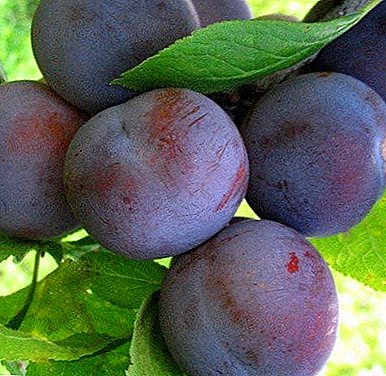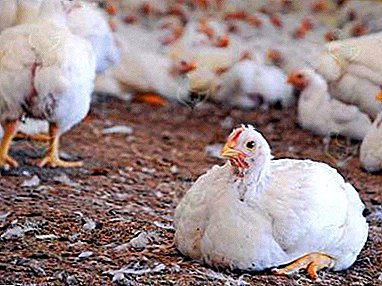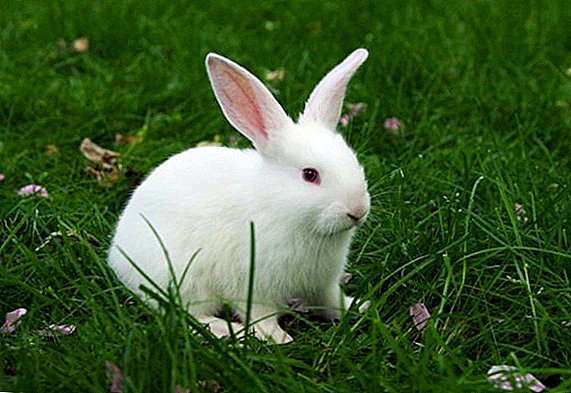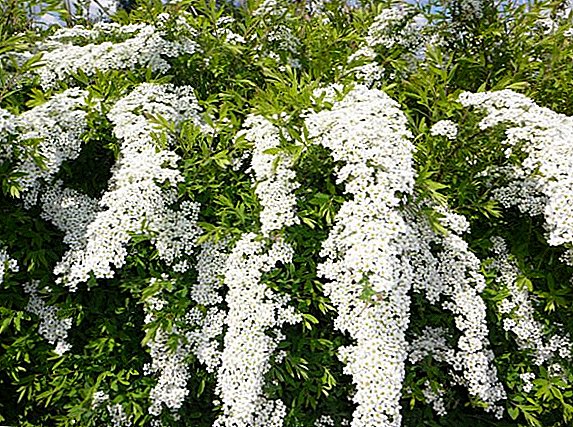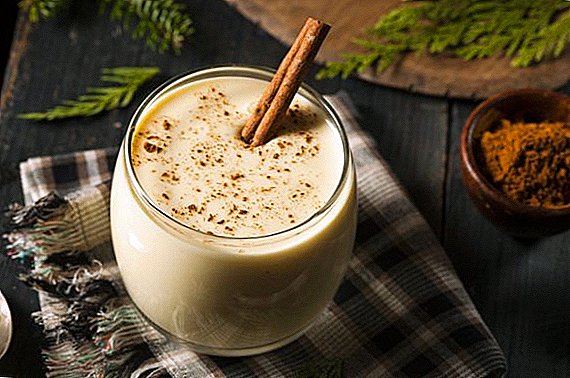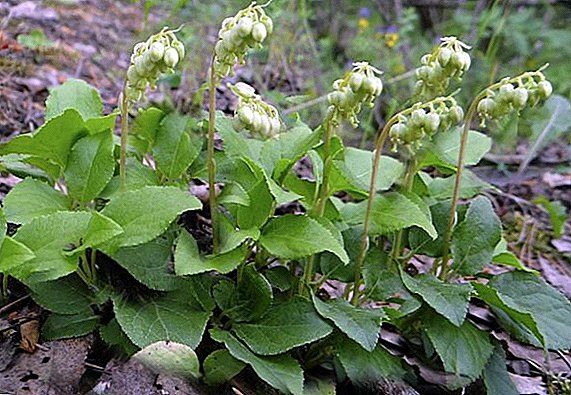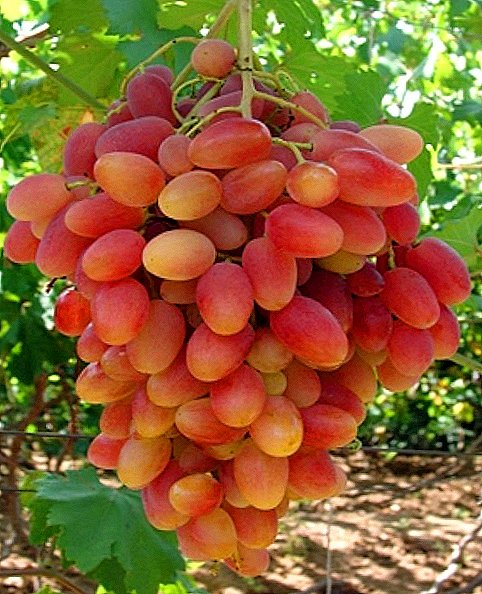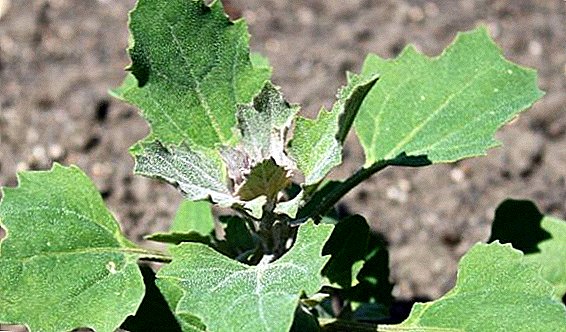 In the warm season, many livestock breeders try to save as much as possible on food for rabbits and offer animals various herbs that can reduce feed consumption and also diversify the diet. However, many plants must be given in moderation so that they are good, not harmful. Next, you will learn about why rabbits are given quinoa, in what form it should be fed, and how to prepare raw materials for the winter.
In the warm season, many livestock breeders try to save as much as possible on food for rabbits and offer animals various herbs that can reduce feed consumption and also diversify the diet. However, many plants must be given in moderation so that they are good, not harmful. Next, you will learn about why rabbits are given quinoa, in what form it should be fed, and how to prepare raw materials for the winter.
Benefit and harm
Quinoa is not just a common plant, but a malicious weed that is hard to get rid of. For this reason, the owners feed this grass to rabbits in order to solve 2 problems at once: both clear the area and "recycle" the cut grass.
Find out whether you can feed rabbits with nettles, dill, sorrel, alfalfa, parsley, euphorbia, and wormwood.Useful properties of the plant:
- a relatively large amount of protein (about 4%);
- vitamins PP, E, C, A;
- minerals - iron, copper, manganese, calcium;
- high energy value (43 kcal).

The composition of the plant includes such substances:
- oxalic acid;
- essential oils;
- alkaloids;
- saponins.
Did you know? On the basis of sprawling quinoa produce drugs that have anti-inflammatory and wound-healing properties. In folk medicine, the plant is used as a general tonic.
The harm of quinoa is that it causes allergies in many animals. Such a reaction may occur as a result of overfeeding, and in the case of the usual intolerance of individual substances that make up. 
Also, do not forget that the benefits directly depend on the purity of the soil. If the quinoa is collected near a landfill or near a factory, then such food will at best cause diarrhea or stomach problems. This also applies to areas that have been treated with chemicals.
A separate item is the collection of flowering plants. The fact is that the flowers contain substances that cause poisoning in rabbits. Therefore, the quinoa can be collected only until the first buds appear. And even if you remove all the inflorescences, hazardous substances can still enter the body of the animal.
Did you know? The size of a rabbit's mustache is equal to the width of its body. This helps him to estimate the distance between the obstacles and to understand whether he can pass in this place or not.
How to give
Consider the features and rules of feeding the swan rabbits so that animals do not develop intestinal swelling, as well as other negative reactions. 
Fresh grass
It is impossible to give the rabbits just picked grass, because after it gets into the stomach, it starts to ferment, which causes indigestion. In fact, this applies to any fresh greenery, so quinoa is no exception.
Also in the fresh plant contains some hazardous substances that evaporate only after drying, even short.
If you do not have time to dry the greens, then it is enough to leave it for 2-3 hours to wither under the sun. Then you can sprinkle the leaves and twigs with water, and then offer pets.
Important! After collecting the quinoa, be sure to wash it from dirt and dust.
To make a complete diet with the inclusion of quinoa, it is necessary to proceed from the fact that this grass should account for no more than 15% of the mass of all green fodder. That is, the remaining 85% is dandelion, nettle, wormwood, wheat grass, clover, as well as greens of agricultural plants. 
In dried form
They dry the quinoa together with the nettle and dandelion so that in the end you get useful odorous hay. Drying is carried out exclusively under a well-blown canopy without access to direct sunlight.
In the cold season, such hay is used as a vitamin and mineral supplement. On a regular basis, dried quinoa, as well as fresh, in its pure form is not used, since such feeding will cause an oversupply of some vitamins and a shortage of others.
However, it is possible to give herbal gathering regularly, but in no case do not exclude high-calorie feed and supplements. Still, hay does not have a high energy value, so in winter it is not able to provide animals with the required amount of energy.
Learn how to make hay for rabbits.
Collection and storage rules
For the quinoa to be useful and of high quality, it must be properly assembled and prepared for storage. 
How to prepare
Harvest only leaves of quinoa in the period when they are tender and juicy. The stems are not collected for the reason that after drying they become very hard, which can injure the mouth of the rabbit.
Before you dry the plant, be sure to sort out the raw materials to eliminate hazardous and poisonous herbs.
The collected raw materials are laid out in one layer, and then dried until the leaves are approximately halved. It is important that they do not crumble, otherwise such hay will become useless.
Important! Discard the collection of diseased and insect-damaged leaves.
How to store
Properly dried leaves are stored for up to 1 year, inclusive, however, the nutrients in the composition quickly evaporate, so after six months the dried plant loses the lion's share of the vitamin and mineral components. 
Dried quinoa is stored in the same way as hay of other herbs. It should be stored in a well-ventilated room with minimum humidity, to exclude the ingress of sunlight, and also to protect against parasites that can live in dry vegetation.
Learn about the features of the use of green, branch feed, additives, vitamins, animal feed, granulated feed for rabbits.
Quinoa is perfect for use as a vitamin supplement, both fresh and dry. But even if the rabbits liked it, it is necessary to observe the dosage and monitor the reaction of the animals.
Can I feed the rabbits swan: video
Reviews
Relatives in the village for living creatures (in assortment) sow a mixture of herbs, there are cereals (it seems oats) and legumes (if I remember the peas correctly) and something else. A mixture of seeds sell ready. It grows a wall, the treasures are huge, but then Tatariya, how is it in latitude?


And you will rather swell the intestines on cabbage leaves if you feed them a lot and for a long time.



